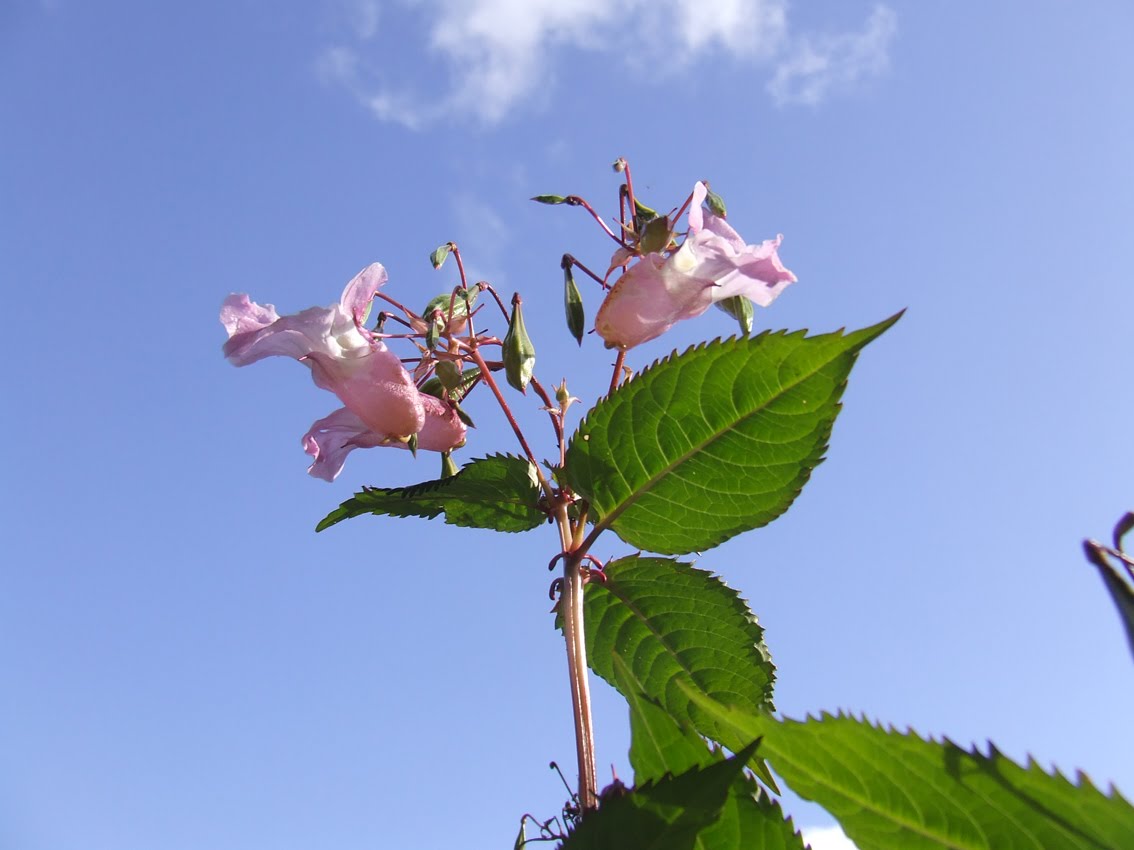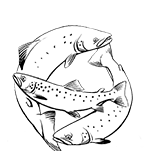Himalayan or Indian balsam (Impatiens glandulifera) is a native of the western Himalayas. Introduced to Britain in 1839, it escaped from gardens and rapidly colonised river banks and areas of damp ground. It is the tallest annual plant in Britain, growing up to 3m high. The characteristic purplish-pink slippershaped flowers appear in June. When the seed pods mature, they explode when touched, scattering the seed up to 7m away. Seeds are also spread by water and they may remain viable for up to two years.
Himalayan balsam plants grow in dense stands that suppress the growth of native grasses and other flora. In autumn the plants die back, leaving the banks bare of vegetation, and therefore liable to erosion.

Identification:
The stems are pinkish-red, hollow and jointed, often with some branching. Leaves and side branches originate from stem joints. The stem is sappy and brittle. The shiny dark green leaves are lance-shaped, have serrated edges, a dark red midrib and can be up to 150mm long.
Impacts
- Thick monospecific stands, shade out low level native plants reducing diversity and denuding riverbanks of understory vegetation.
- During flooding dead plant material (which breaks down slowly) can enter river and and impede water flow.
- Winter dieback exposes soil to erosion.
- Greater nectar production makes flowers more attractive to bumblebees resulting in less pollination of native species.
Prevention
Correct disposal of garden waste. Do not discard plants with developed seed heads. Control of movement of soils contaminated with seed.
Himalayan Balsam is an annual plant and therefore the key objective for control of Himalayan Balsam is to exhaust the plants seed bank. This is done by repeatedly removing adults before they set seed. Seed bank longevity is about two years and control programmes should be undertaken for the whole of this period followed by a 5 year monitoring programme. It may also be necessary to consider a bankside rehabilitation programme to prevent erosion.
Physical Control
By hand pulling is an effective way of removing adult plants in small areas and is more environmentally friendly than chemical control. Care should be taken to remove the whole plant as plants can regrow within the same season if cut and not fully removed.
Cutting or grazing can also achieve control but cutting should not be attempted once the seed heads have formed, as this would effectively spread the plant. Continual monitoring should be undertaken to prevent reseeding as cut plants can regrow. The first monitoring visit should be timed shortly after cutting, as Himalayan Balsam has been known to re-grow within weeks of control.
Chemical Control
Can be used for high density large populations. It should be noted that, except in the case of invasive species, the use of herbicides near a watercourse is restricted and requires prior written permission from SEPA. Chemical control can take up to two years to eradicate the plant (with additional monitoring following this).








